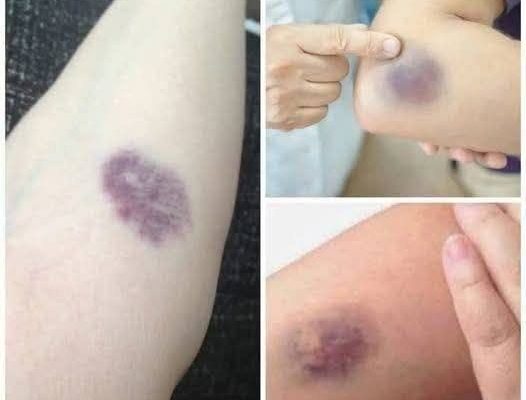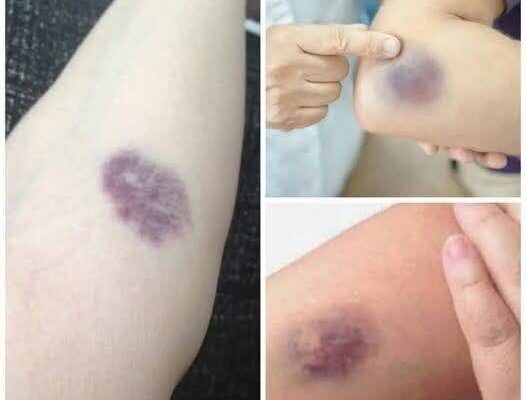Dyshidrotic eczema, also known as pompholyx, is a type of eczema that manifests as tiny, fluid-filled blisters on the palms, sides of the fingers, and soles of the feet.
These blisters often appear suddenly and can be incredibly itchy and painful. While the exact cause remains unknown, it’s believed to be linked to an overactive immune system and may be triggered by certain allergens, irritants, or even stress.
Dyshidrotic eczema primarily affects adults between the ages of 20 and 40, with women being more commonly affected than men. Individuals with a history of atopic dermatitis (the most common type of eczema), hay fever, or other allergic conditions are more susceptible to developing this condition.
Dyshidrotic Eczema
Dyshidrotic eczema is a skin condition that causes small itchy blisters on the fingers, hands and feet. Learn about what it looks like, causes, symptoms and treatment options.
Overview
Dyshidrotic eczema is a chronic skin condition that causes small, itchy blisters on the fingers, hands and feet.1 They normally appear on the palms of hands, soles of the feet and edges of the fingers and toes and can often appear suddenly.
This type of eczema is also referred to as pompholyx (which means “bubble” in ancient Greek), palmoplantar eczema or vesicular eczema.
People can have a single flare of dyshidrotic eczema, but it’s more common for it to come and go over long periods of time.
When dyshidrotic eczema occurs on the hands, it’s often called hand eczema. However, hand eczema is not exclusive to dyshidrotic eczema. You can get various types of eczema on your hands1. Hand eczema affects an estimated 2% to 10% of people and dyshidrotic eczema is the cause for approximately 5% to 20% of those cases.1,2
Similarly, sometimes people refer to dyshidrotic eczema as foot eczema when it presents on the feet.1 However, you can get various types of eczema on your feet. It’s not exclusive to dyshidrotic eczema.
What does dyshidrotic eczema look like?
Dyshidrotic eczema looks like small, deep blisters or bubbles on the skin of the hands and feet.3 Some people describe it as looking like tapioca pearls.3 It can also lead to red, inflamed skin and cracks and dryness in the affected areas.3
Who gets dyshidrotic eczema?
Anyone can get dyshidrotic eczema. It is most common in younger adults, typically between the ages of 20 and 40.4 Dyshidrotic eczema is also found more frequently in women than men.5 If you have a family history of dyshidrotic eczema, you are more likely to get it.5 In addition, if you have another type of eczema, you’re more likely to get dyshidrotic eczema.4
Is dyshidrotic eczema contagious?
No, dyshidrotic eczema is not contagious. You can’t catch it or spread it to another person.
Causes
What causes dyshidrotic eczema?
The actual cause of dyshidrotic eczema is not known. It is often more common in people who have another form of eczema, such as atopic dermatitis.4 It also tends to run in families, suggesting a genetic component.4
What triggers dyshidrotic eczema and causes a flare?
Some common dyshidrotic eczema triggers include:
- Contact allergens
- Metals, particularly nickel and chromium4
- An irritant or allergen in laundry detergent4
- Lifestyle factors
- Stress4
- Frequently wet hands or feet; too much moisture4
- Certain occupations that require extensive hand washing (healthcare, food services, sanitation)
- Sweaty palms4
- Smoking tobacco4
- Environmental factors
- Seasonal allergies like hay fever4
- Hot, humid weather4
- Some medications, such as aspirin, intravenous immunoglobulin or birth control pills4
- A skin infection, such as athlete’s foot4
Symptoms
What are the symptoms of dyshidrotic eczema?
Common symptoms of dyshidrotic eczema include:
- Sudden itching on the palms, sides of the finger, or sole of feet6
- Small fluid-filled blisters on hands and feet6
- Itching and burning sensations around blisters6
- Scaly skin on or around blisters6
- Dry, peeling skin after blister fades6
- Large blisters in severe cases
Symptoms of dyshidrotic eczema typically appear only on the hands and feet, not all over the body. It usually begins with painful, deep blisters called vesicles. Sometimes itching and burning sensations present before the blisters.7 The blisters can last for a few weeks. As blisters heal, the skin dries and peels. This leaves it tender and dry and sometimes creates painful fissures or cracks.7 Skin can also become infected.6 Severe cases of dyshidrotic eczema can sometimes lead to large blisters.
Diagnosis
How is dyshidrotic eczema diagnosed?
Dermatologists can usually diagnose dyshidrotic eczema with a skin exam and medical history. They might also take a skin scraping or do a blood test to rule out other skin conditions.
Management and treatment
How is dyshidrotic eczema treated?
Once you are diagnosed with dyshidrotic eczema, many cases can improve quickly with a short course of topical corticosteroids combined with soaking or applying cool compresses to affected areas a few times a day to help dry out blisters.1
Sometimes dyshidrotic eczema also presents with a fungal infection on the hands or feet. In these cases, the dermatologist may prescribe an anti-fungal medication.3
When dyshidrotic eczema is severe or flares happen often, dermatologists may prescribe phototherapy, topical calcineurin inhibitors (TCIs) or oral steroids.1 Occasionally, treatments for sweating such as topical anti-perspirants or botulinum toxin (botox) injections are used to control the sweaty hands and feet that can trigger the condition.8
Everyone experiences eczema differently, so be sure to consult with your healthcare provider to determine the best course of treatment for your individual symptoms.
How do you manage dyshidrotic eczema symptoms?
Knowing your triggers and maintaining a regular skincare routine can help prevent and manage dyshidrotic eczema flares. Helpful skincare steps can include:
- Wash the affected skin with a mild cleanser and gently pat dry.
- Apply a heavy cream with ingredients like ceramides to help repair the skin barrier.
- Wash then moisturize hands or feet immediately after coming into contact with a potential trigger.
- Use a layered glove method when showering to prevent contact with irritating shampoos and other products.
- Use gloves when washing dishes to avoid irritating soaps.
- Remove rings and other jewelry when you wash your hands so water and soap doesn’t linger on your skin under the jewelry.
- Thoroughly dry hands and feet after bathing or swimming to reduce the moisture.
- Apply potassium permanganate to help dry out blisters caused by dyshidrotic eczema.7
Knowing your triggers can help you avoid them. Patch testing with a dermatologist is one way to identify possible triggers, if you suspect certain ingredients or allergens.8 For example, if nickel is a known trigger, you can avoid everyday objects with nickel in them like zippers, metal tools, belt buckles, and costume jewelry. Your doctor might also suggest nutritional changes to reduce the amount of nickel or cobalt in your diet if you have a hypersensitivity.8
Isolation and finding relationships with eczema
Four adults share their experiences of living with eczema and how they handle feelings of isolation and its impact on their relationships.
Risk factors and related conditions
What are possible complications from dyshidrotic eczema?
With dyshidrotic eczema, you have to be careful to avoid bacterial skin infections. Infections can delay or prevent healing.8 Possible signs of bacterial infection include swelling, crusting or pus-filled blisters. See a dermatologist to check for infection. They may prescribe antibiotics to treat the skin infection.8
Does dyshidrotic eczema affect mental health?
Managing a chronic skin condition, like dyshidrotic eczema, can be challenging and lead to stress. When dyshidrotic eczema appears on the hands, it makes it a highly visible form of eczema. It can affect social interactions, such as shaking hands or performing work tasks. This can lead to stress. Since stress can often exacerbate your symptoms for this type of eczema, it’s important to manage your stress as well as your symptoms. Mental health professionals can provide advice on how to manage the stress and emotional effects that may be associated with dyshidrotic eczema.


